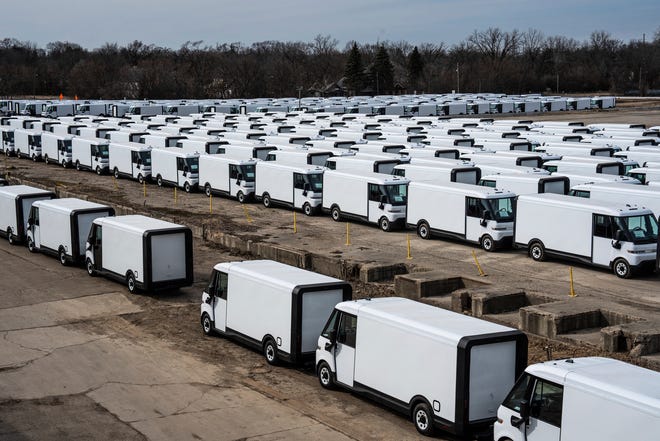General Motors is facing challenges with its BrightDrop electric commercial vehicles, with hundreds of vans being stored in a Michigan lot due to low demand in the U.S. market. The Ingersoll, Ontario plant that produces these all-electric vans recently reopened after a two-week shutdown to balance inventory. GM is offering significant rebates, up to $25,500, on the larger van models to boost sales. The BrightDrop vans, now sold under the Chevrolet brand in the U.S., have struggled to compete with rivals like Ford’s E-Transit van, which is priced more than $20,000 lower before incentives. Industry experts point to the high price tag of BrightDrop vans, around $74,000 before incentives, as a major deterrent despite their superior range of up to 272 miles on a single charge. GM sold only 1,529 BrightDrop vans in the U.S. last year, compared to Ford’s 12,610 E-Transit vehicles and Rivian’s 13,243 EDV. The company has made significant investments in the BrightDrop brand, including an $800 million investment to convert the CAMI Assembly plant to EV production. Despite this, sales remain below expectations, raising concerns about the future of the CAMI plant and its 1,300 employees. GM remains committed to the BrightDrop brand, citing its best-in-class range and safety features, and has recently hired a new vice president to oversee its fleet and commercial business. The company’s ability to manage tariffs and potential changes in U.S. EV incentives will be crucial in determining the future of BrightDrop production.
Key Challenges for BrightDrop
- High price point compared to competitors
- Low demand despite superior vehicle range
- Dependence on U.S. market dynamics and tariff policies
- Significant investment in EV production infrastructure

The situation with BrightDrop sales has implications not only for GM but also for the Canadian economy, as the CAMI plant is a significant employer in the region. Industry analysts suggest that GM may need to adjust its production numbers to more realistic levels, as the initial projections appear to have been overly optimistic. The future of EV production at CAMI remains uncertain, dependent on both market demand and regulatory factors.



